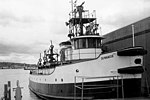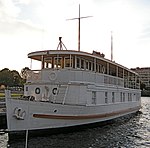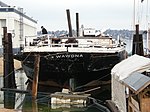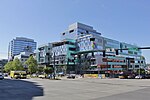Museum of History & Industry

The Museum of History & Industry (MOHAI) is a history museum in the South Lake Union neighborhood of Seattle, Washington, United States. It is the largest private heritage organization in Washington state, maintaining a collection of nearly four million artifacts, photographs, and archival materials primarily focusing on Seattle and the greater Puget Sound region. A portion of this collection (roughly 2% at any given time) is on display in the museum's galleries at the historic Naval Reserve Armory in Lake Union Park.The museum's keynote exhibits include: Boeing's first commercial plane, the 1919 Boeing B-1; the Petticoat Flag, a U.S. flag sewn by women during the 1856 Battle of Seattle; and the Rainier Brewing Company's 12-foot tall neon "R" sign. In addition to both permanent and temporary exhibits, MOHAI administers ongoing youth and adult programming, and regularly hosts public events in partnership with other community organizations, particularly within the South Lake Union neighborhood. MOHAI is accredited by the American Alliance of Museums and is a Smithsonian affiliate museum.
Excerpt from the Wikipedia article Museum of History & Industry (License: CC BY-SA 3.0, Authors, Images).Museum of History & Industry
Terry Avenue North, Seattle Capitol Hill
Geographical coordinates (GPS) Address Nearby Places Show on map
Geographical coordinates (GPS)
| Latitude | Longitude |
|---|---|
| N 47.6276 ° | E -122.3366 ° |
Address
Naval Reserve Armory Building
Terry Avenue North 860
98109 Seattle, Capitol Hill
Washington, United States
Open on Google Maps











